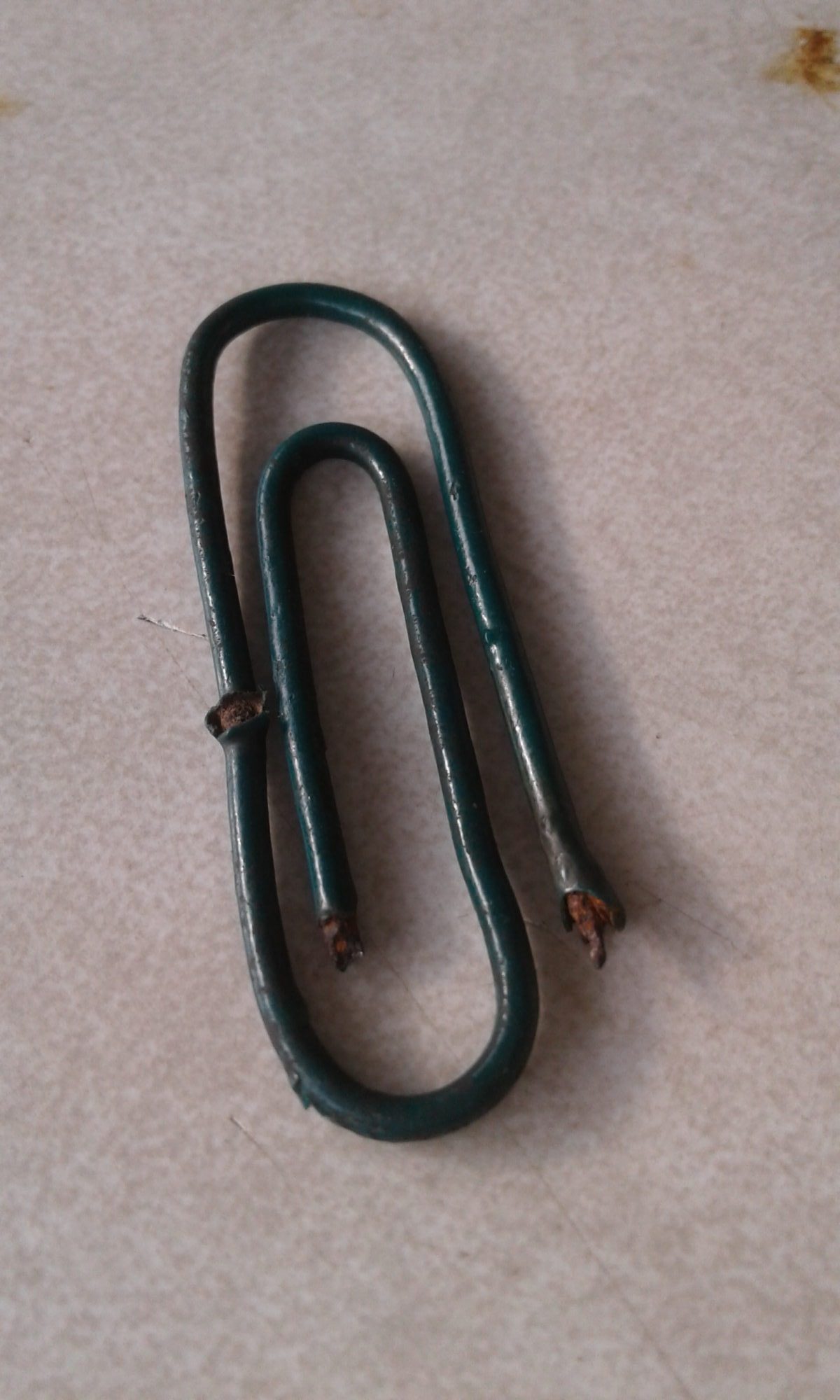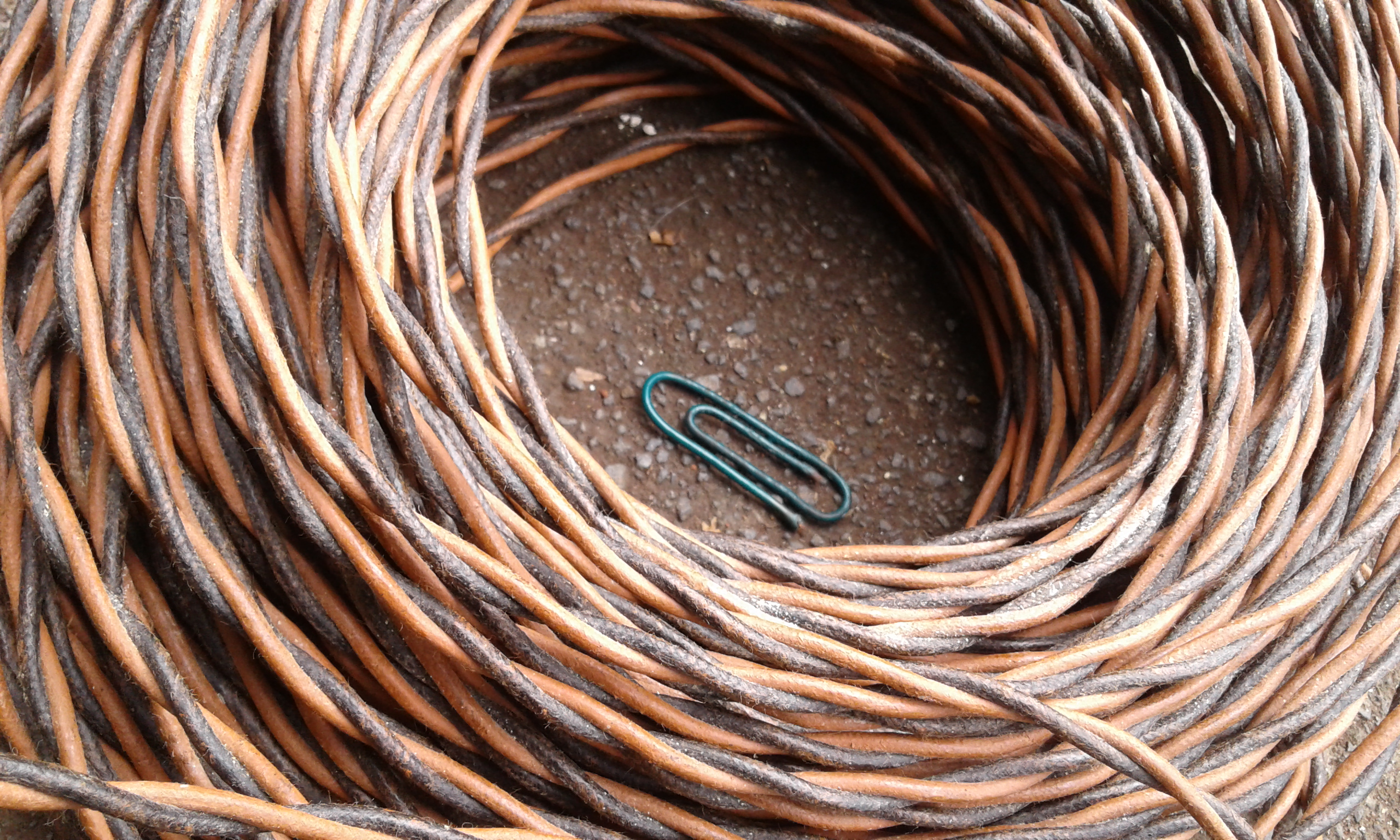Twisted pair has been used in signal transmission for several decades. Today, it is most commonly used in network cabling. In the distant past, it was not uncommon to see it employed as a balanced antenna feed line. Modern radio handbooks give it little or no mention. As I understand it, the regular twists serve to cancel out electromagnetic interference, a benefit not inherent in other balanced lines.
I received some unlabeled twisted pair cabling from two local hams, neither of whom claimed to know its intended purpose. This mysterious cable comes in a single twisted pair and is insulated with cloth-over-rubber (and in one case, enamel just beneath that). The stranded 22AWG conductors appear to be steel, with what appears to be a tinned copper center strand.
I had initially used the wire as elements for various HF and VHF antennas, which yielded satisfactory results despite challenges that come from not knowing its velocity factor. While it’s safe to assume that it’s not the best radiator, the wire’s inherent durability is an acceptable compromise for my purposes. Untwisting enough of the cabling to make a 40m loop is a bit of a chore, and soldering the stuff is a bit more difficult than copper of the same size, but the it was free – and I am poor!
After spending half a week cobbling together some ladder line (more on that another day), I realized the 50 feet I made was about 100 feet too short. I began looking for something else to use for feed line while I scrounged enough material to make more ladder line when it dawned on me: I might have suitable feed line – and large amounts of it – right here!
Is it safe? I don’t know! Assuming the only danger was overheating and causing a fire, I checked the line for hotspots and heat damage after each session until I was confident that I wasn’t going to burn the forest down.
Is it efficient? I don’t know! I plan to try a few experiments with my meager tools to solve some parts of the mystery. If I make some dummy loads, I might be able to use them to determine the characteristic impedance of the cable.Beyond that, I am unsure how I can investigate further. I’ll have to learn a lot more before I can confidently say much more about this mystery wire – but for now, it’s getting me on the air.

On-Air adventures with improvised and (sometimes) field-expedient systems
